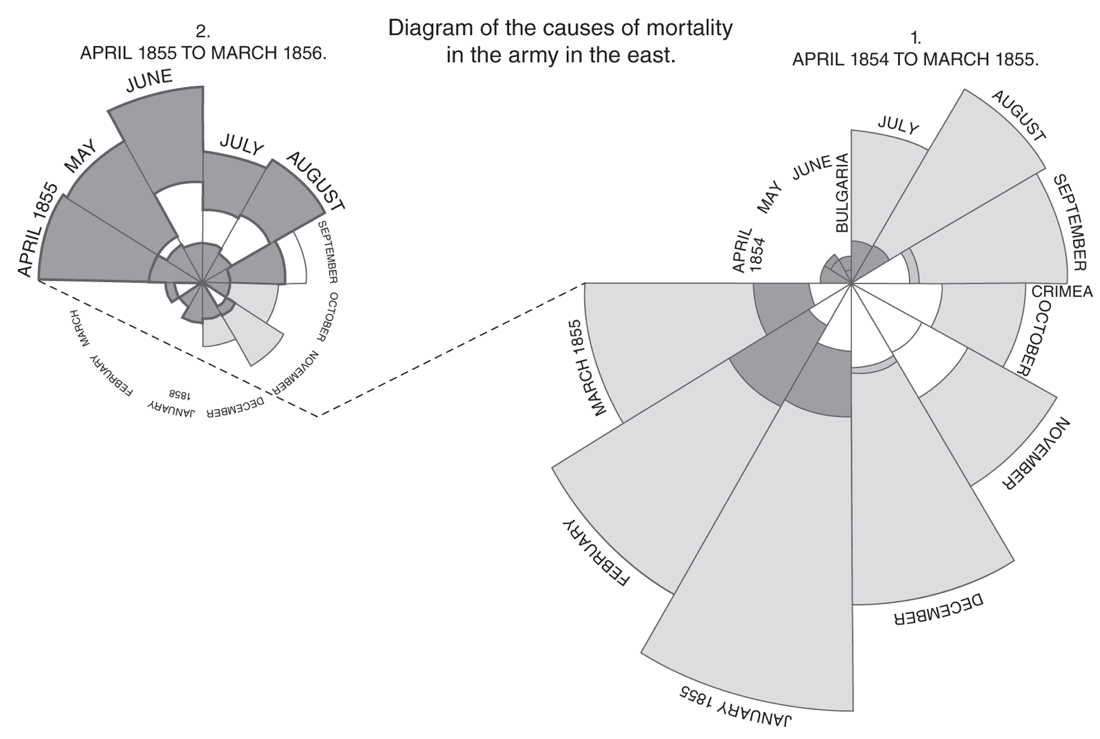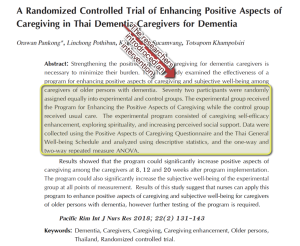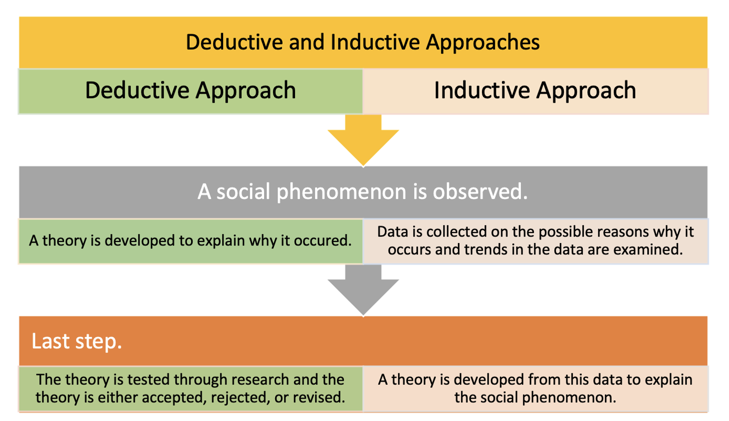The Two Main Research Types – A Brief Overview & Basics of Research
In this chapter, we will have a short overview of the two main types of research and some basics about research in general, before we dive further into learning more about each in detail.
Content includes:
- Theory, Research, and Practice
- Evolution of nursing research
- The Main Classes of Qualitative Methods
- The Main Classes of Quantitative Methods
- Inductive versus Deductive Reasoning
Objectives:
- Describe the interconnectedness of theory, research, and practice in nursing.
- Explain how theory, research, and practice influence patient care.
- Discuss the evolution of evidence-based practice (EBP) and nursing research.
- Distinguish between qualitative and quantitative research methodologies, including their purposes, data collection methods, and applications in nursing practice.
- Explain the significance of translational research and implementation science in ensuring that research findings are effectively applied in clinical settings to improve patient care.
Key Terms:
Deductive Reasoning: The process of drawing valid inferences. Also known a top-down logic.
Ethnography: The scientific description of the customs of individual peoples and cultures.
Grounded Theory: A qualitative research methodology that involves collecting and analyzing data to construct hypotheses and theories.
Inductive Reasoning: A logical process based on experiences, observations, and facts to evaluate a situation and make a general assumption like a theory.
Phenomenology: Phenomenology is a research approach in qualitative studies that focuses on exploring and understanding people’s lived experiences.
Research: Creation of new knowledge from a systematic approach to investigate a behavior or theory or to understand a phenomenon; a systematic inquiry that uses disciplined methods to answer questions or solve problems
Theory: Organizing structures of our reflections, observations, projections and inferences.
Introduction
We are now going to start learning a bit about systematic research. Remember, research is the underpinning for EBP. Research provides the evidence, and EBP takes that evidence and embeds it into practice to improve clinical outcomes.
Nursing students need to gain an understanding of how essential elements of evidence-based practice (EBP), research, and quality improvement (QI) connect. Each part has its own special traits, but all aim to improve the quality of care in healthcare. The end goal is the same: Improved patient outcomes. Knowing the similarities and differences among these elements is crucial for using the best evidence to enhance healthcare delivery.
In this chapter, we will also learn some historical aspects of the beginning of nursing research, the basics of evidence and research methodology, and some key aspects of the two general types of research methodology. It is important to understand the various components of research so that we can be consumers of research and understand a bit more about the research articles that we read to inform our practice.
Theory, Research, and Practice
Understanding the relationship between theory, research, and practice is foundational to prelicensure nursing students’ education and professional development. It is true that it takes some persuasion to understand why you must learn about research in a nursing program. However, the triad of theory, research, and practice is a crucial triad in nursing, each influencing and reinforcing the other to ensure that nursing care is based on the best available evidence and is continuously improving.
Theory
A theory is a set of concepts, definitions, relationships, and assumptions that project a systematic view of phenomena by describing specific interrelationships among concepts to describe, explain, predict, or prescribe care. Parker and Smith (2010) define theories as “organizing structures of our reflections, observations, projections and inferences” (p. 7).
Theories provide the foundation for nursing practice by offering a framework for understanding and organizing knowledge. They help nurses make sense of complex clinical situations, guide decision-making, and predict patient outcomes. For example, Jean Watson’s Theory of Human Caring emphasizes the importance of holistic care and the nurse-patient relationship, influencing how nurses approach patient care. A theory can become testable and then become evidence to guide practice. Therefore, research is akin to theory development.
Research
Polit and Beck (2021) define research as a “systematic inquiry that uses disciplined methods to answer questions or solve problems” (p. 2). Research in nursing is a systematic inquiry that uses disciplined methods to answer questions or solve problems relevant to nursing practice, education, or administration. It involves collecting, analyzing, and interpreting data to generate new knowledge or validate existing knowledge. Research is the process through which new evidence is generated. Research becomes an explanation about something that is tested.
In nursing, research can range from clinical trials to studies on healthcare systems, patient outcomes, and nursing education. Research informs evidence-based practice by providing the data needed to make informed decisions about patient care. For instance, research on pain management techniques informs nurses on the most effective ways to alleviate patient discomfort.
Practice
Nursing practice is the application of nursing knowledge, skills, and values to deliver care to patients. It includes all the activities and responsibilities nurses perform in their roles, from direct patient care to health education and advocacy.
Practice is where theory and research come to life. Nurses use theoretical knowledge and research findings to inform their day-to-day care decisions. Practice also serves as a source of questions and problems that can drive further research and theory development. For example, clinical observations about the effectiveness of a new wound care protocol might lead to research studies that either support or refine the approach.
The current emphasis in nursing research is on translational research and implementation science. Translational research refers to translating research into practice (Woolf, 2008). The purpose is to ensure that new treatments and research knowledge to actually reach the intended patients, are implemented correctly, and are continuously reevaluated. This action moves theory into a new dimension for application to practice. If translational research is seen as a method to move a theory into another dimension, and if implementation science is perceived as supporting EBP and research utilization, then the relationship with practice is further enhanced and becomes stronger. Thus, putting research (evidence) and theory into practice (translation) optimizes EBP.
The Evolution of Nursing Research
Nursing research, specifically, has evolved significantly over time, with Florence Nightingale often credited as the pioneer who laid the groundwork for this field. Before Nightingale, nursing was largely seen as a task-oriented role with little emphasis on theory or research. However, Nightingale’s work in the mid-19th century transformed nursing into a more structured and evidence-based profession.
Florence Nightingale’s Contributions
Florence Nightingale is best known for her work during the Crimean War (1853-1856), where she implemented sanitary practices that drastically reduced mortality rates among wounded soldiers. Beyond her immediate impact, Nightingale was a strong advocate for the use of statistical methods to improve healthcare outcomes (Riddle, 2005). She collected and analyzed patient morbidity and mortality data, using her findings to argue for better sanitation, nutrition, and overall hospital care.
Nightingale’s work marked one of the earliest examples of nursing research. She developed the “coxcomb” diagram, a form of pie chart, to visually represent data on mortality rates, making her findings accessible to both medical professionals and policymakers (See Figure 2.1). The Coxcomb Diagram is a type of polar area chart, a variation of the pie chart where each wedge represents a category, but the area of each wedge (rather than its angle) is proportional to the value it represents. Through this diagram, Nightingale demonstrated that far more soldiers died from preventable diseases than from combat wounds (Riddle, 2005). In fact, she showed that sanitary improvements could reduce mortality rates more effectively than battlefield medicine alone. Some key insights from the diagram included:
- In the earliest months of the war, disease-related deaths were over ten times higher than deaths from wounds.
- After implementing improved sanitation, better ventilation, clean water, and proper nutrition, mortality rates dropped dramatically in later months.
Her research improved patient care during her time and set a precedent for the importance of evidence-based practice in nursing.

Above Picture: Florence Nightingale, Deposit Photos

Above Picture: Coxcomb Diagram. Nightingale, F. (1858). Notes on matters affecting the health, efficiency and hospital administration of the British Army. London, UK: Harrison and Sons. As cited in Riddle, L. (2005). Polar-area diagram: Biographies of women mathematicians. http://www.agnesscott.edu/lriddle/women/nightpiechart.htm
Nursing Research in the 20th Century
The early 20th century saw further developments in nursing research, particularly with establishing nursing as an academic discipline. In the 1920s and 1930s, nursing leaders such as Mary Adelaide Nutting emphasized the need for education and research in nursing. Marcy Adelaide Nutting was the first woman to hold a professorship at Columbia University and the world’s first university professor of nursing. One of her many innovations was creating a graduate program for advanced nursing training. This led to the development of nursing theories, which provided a conceptual framework for research and practice.
By the mid-20th century, nursing research had become more formalized with the establishment of dedicated research programs and journals. The 1950s and 1960s were particularly significant as nursing scholars began to focus on developing nursing knowledge through research. This period saw the emergence of quantitative research methods in nursing, which allowed for more rigorous testing of hypotheses and the development of evidence-based practices.
Modern Nursing Research
Currently, nursing research is a diverse and dynamic field that encompasses a wide range of methodologies, including both quantitative and qualitative approaches. The focus has expanded to include not only clinical care but also public health, education, policy, and leadership. Research in nursing now plays a crucial role in improving patient outcomes, shaping healthcare policies, and advancing the profession.
Nightingale’s legacy continues to influence nursing research, particularly in the emphasis on data-driven decision-making and using research to advocate for patient care improvements. Her pioneering work laid the foundation for a profession that is now deeply rooted in research, evidence-based practice, and continuous learning.
Qualitative Research: Qualitative research is rooted in research that originated in anthropology, sociology, and psychology. Qualitative research is not experimental, it seeks to understand the lived experiences in humans and seeks to understanding meaning, and it is subjective in nature. The overarching goal of qualitative research is theory-generating. It is an inductive process (inductive reasoning). Most often, qualitative research features an interview style. This allows the researcher to ask open-ended questions and the participants share their experiences and/or explanation of particular meanings in life.
Introduction to the Basics of Research Methods
In nursing and other fields, research is generally categorized into two basic types: quantitative and qualitative. Each type serves different purposes, employs different methodologies, and provides different kinds of insights.
Two Main General Classes of Research
The two main classes of research are:
- Qualitative Research – subjective, seeks a human’s experience as a narrative.
- Quantitative Research – objective, seeks to statistically make inferences about a sample in order to generalize to the larger population.
We need to have a basic understanding of the difference between the two main types of research before we study the nuances of each.
Qualitative Research
Qualitative research focuses on understanding human experiences, emotions, and behaviors from the perspective of those experiencing them. It is exploratory in nature and seeks to answer “how” and “why” questions rather than measuring numerical outcomes. For example, a nurse researcher might conduct interviews with cancer patients to explore their experiences of coping with pain. Methods like interviews, focus groups, and observations allow nurse researchers to gather rich, descriptive data about people’s lived experiences (Eckardt et al., 2017). This approach is useful in understanding patient perspectives, improving communication, and addressing emotional and psychological aspects of healthcare.
Qualitative research is rooted in research that originated in anthropology, sociology, and psychology. Qualitative research is not experimental; it seeks to understand the lived experiences of humans and seeks to understand meaning, and it is subjective in nature. The overarching goal of qualitative research is to gain an in-depth understanding of a specific phenomenon, explore how people experience and interpret the world, and uncover patterns or themes that might not be immediately apparent (McCusker & Gundaydin, 2015). This type of research is especially valuable when dealing with complex, contextual, or subjective topics. Qualitative research is often theory-generating. It is an inductive process (inductive reasoning). Frequently, qualitative research features an interview style. This allows the researcher to ask open-ended questions and the participants share their experiences and/or explain particular meanings in life.
Another key characteristic of qualitative research is its holistic approach to studying human experiences. Instead of isolating variables and controlling conditions, as is common in quantitative research, qualitative studies seek to understand the broader context in which people live, work, and interact (Roller & Lavrakas, 2015). This means that researchers often spend extended time engaging with participants, sometimes using ethnographic methods to immerse themselves in the environment being studied. This in-depth approach allows researchers to capture cultural, social, and environmental influences that shape behaviors, thoughts, and emotions.
Furthermore, reflexivity is an essential aspect of qualitative research. Because the researcher plays an active role in collecting and interpreting data, it is important to acknowledge how their own perspectives, biases, and experiences might influence the research process. Many qualitative researchers engage in journaling, self-reflection, and peer debriefing to ensure that their interpretations remain as authentic and unbiased as possible. This process of critical self-awareness strengthens the credibility and trustworthiness of the findings.
Another defining feature of qualitative research is its iterative process—meaning that data collection and analysis often occur simultaneously. Unlike quantitative studies, where data is typically gathered first and analyzed later, qualitative researchers continuously review, interpret, and refine their findings throughout the study. This allows them to adjust interview questions, explore emerging themes in greater depth, or seek additional participants if needed. The goal is to reach saturation, a point where new data no longer introduces novel insights.
Because qualitative research often deals with sensitive topics, ethical considerations are especially important. Researchers must ensure that participants feel safe, respected, and heard throughout the study. Obtaining informed consent, ensuring confidentiality, and using pseudonyms to protect participant identities are standard ethical practices. Additionally, when working with vulnerable populations—such as patients with chronic illnesses, trauma survivors, or marginalized communities—researchers must take extra precautions to minimize harm and promote participant well-being.
Finally, qualitative research is not limited to one type of data collection. While interviews and focus groups are the most commonly used methods, researchers may also analyze diaries, letters, photographs, videos, social media content, and even artwork to gain a deeper understanding of participants’ experiences. The use of multiple data sources, known as triangulation, helps validate findings and enhance the richness of the study. This comprehensive approach makes qualitative research a powerful tool for exploring the complexity of human lives in ways that numbers alone cannot capture.
Qualitative research differs from quantitative research in that:
- It is Subjective – Qualitative research focuses on personal experiences, emotions, and meanings rather than objective measurements.
- It uses an Exploratory focus – It aims to understand complex phenomena, behaviors, and social interactions.
- It utilizes an Inductive Approach – It develops theories and insights from the data rather than testing pre-existing hypotheses.
- It is Descriptive and Detailed – It provides rich, in-depth narratives rather than numerical summaries.
- It uses Non-Numerical Data – Collects words, images, observations, and personal accounts instead of numbers or statistics.
- It is Flexible and Adaptive – Research methods can evolve as new insights emerge during the study. The researcher is directly involved with the participants as well.
- It is Context-Specific – Examines participants in their natural settings to capture real-world behaviors and interactions.
- It uses Small, Purposeful Samples – Selects participants based on relevance to the research question, not randomization.
- It uses an Interpretative Analysis – Involves thematic, content, or narrative analysis to identify patterns and meanings in the data.
- It is Human-Centered – Prioritizes understanding people’s thoughts, emotions, and lived experiences, often used in healthcare, psychology, and social sciences.
Here are the main types of qualitative research designs:
| Type of Qualitative Research | Methodological Focus | Theoretical Focus | Researcher Involvement | Excerpt from Studies |
| Grounded Theory
Generates new theories from participant data. |
Uses iterative data collection, theoretical sampling, and coding to develop emergent themes. Data collection continues until theoretical saturation is reached. | Develops theory grounded in data collected from participants. Focuses on social processes, interactions, and behaviors. | Researcher actively collects and analyzes data simultaneously. Uses constant comparative analysis and coding (open, axial, selective). | Keogh and colleagues (2015) used grounded theory methods to understand how mental health service users transitioned home from a hospital stay. The researchers found that the core variable was the patients’ management of preconceived expectations. |
| Phenomenology
Explores the essence of lived experiences. |
Descriptive and interpretative approaches uncover meaning from participants’ experiences. Data analysis involves identifying essential themes and structures. | Explores lived experiences of individuals to understand the essence of a phenomenon. | Researcher brackets personal biases and focuses on participants’ experiences. Uses in-depth interviews and personal narratives. | Tornoe and colleagues (2015) used a phenomenological approach in their study of nurses’ experiences with spiritual and existential care for dying patients in a general hospital.
|
| Ethnography
Examines cultural and social behaviors. |
Involves long-term fieldwork, thick descriptions, and triangulation of multiple sources. Data is interpreted through cultural and social lenses. | Focuses on culture-sharing groups to understand behaviors, rituals, and social interactions. Draws from anthropology and sociology. | Researcher immerses in participants’ environment, often for extended periods. Uses participant observation, interviews, and field notes. | Sandvoll and colleagues (2015) used ethnographic methods to explore how nursing home staff members managed unpleasant resident behaviors in two public nursing homes in Norway.
|
| Case Study
Investigates a specific event, person, or organization. |
Uses detailed data collection, including documents, archival records, interviews, and observations. Can be single or multiple case studies. | Examines a specific case (event, process, individual, or organization) in depth. Used in business, education, and policy research. | Researcher gathers multiple data sources (interviews, documents, reports, observations) to build a holistic understanding. | Lee and Carter (2018) utilized a case study of a non-profit organization to reveal how leadership influences employee motivation through transformational management strategies. |
| Narrative Research
Studies life stories and meaning-making. |
Focuses on chronological sequencing of life events. Uses thematic, structural, or dialogical analysis to interpret stories. | Studies individual life stories, emphasizing personal experiences and how people construct meaning over time. | Researcher engages in long interviews, often co-constructing stories with participants. May also analyze autobiographies, diaries, or letters. | A study by Anderson (2022) explored, through personal narratives, how veterans expressed their identity evolved post-military service, reflecting on themes of loss, reintegration, and resilience. |
| Action Research
Focuses on problem-solving and change. |
Uses cycles of planning, acting, observing, and reflecting. Methods include interviews, focus groups, and surveys. | Solves real-world problems through collaborative inquiry with participants. Focuses on change and improvement. | Researcher works closely with participants in an iterative cycle of action, reflection, and change. | Through participatory action research by Miller & Roberts (2021), teachers developed new classroom strategies to enhance student engagement, showing a 20% improvement in participation rates. |
| Autoethnography
Uses personal experiences to explore cultural phenomena. |
Focuses on self-reflection, narrative storytelling, and cultural critique. Data may include diaries, personal reflections, and interviews. | Uses personal experience to explore cultural, social, or political phenomena. Blends autobiography with ethnographic research. | Researcher is both participant and observer, reflecting on their own experiences and emotions. | “By analyzing my experiences as a first-generation college student, I explore how cultural identity shapes academic success” (Lopez, 2020). |
Examples of Qualitative Research in Nursing
Exploring patient experiences with chronic illness to understand their coping mechanisms and emotional responses.
- Investigating the cultural beliefs and practices that influence healthcare decisions in a particular community.
- Understanding the perspectives of nursing staff on the implementation of a new healthcare protocol.
![]() Knowledge to application link.
Knowledge to application link.
Here is a qualitative study in which the researchers conducted interviews in order to obtain the subjective perspectives of the participants.

Quantitative Research – Two Main Types
Quantitative research involves the systematic investigation of phenomena by gathering quantifiable data and performing statistical, mathematical, or computational techniques. It is primarily concerned with measuring variables, testing hypotheses, and producing numerical data that can be transformed into usable statistics.
Quantitative research aims to utilize the statistical data to generalize results to the population studied. Some key features include utilizing statistics to help answer the clinical question and determine whether the hypothesis is statistically supported.
There are two main types of quantitative research:
- Experimental: In experimental research, the researcher introduces an intervention or treatment.
- Non-Experimental: In non-experimental research, the researcher does not introduce an intervention or treatment but instead acts as a bystander. Meaning, they collect data without introducing a treatment.
Quantitative research differs from qualitative research in that:
- It is completely objective.
- It utilizes a deductive (versus inductive) approach.
- It utilizes a hypothesis(es).
- It tests a theory.
- The researcher is usually not directly involved with the participants for data collection in order to minimize bias.
- The data is analyzed statistically in order to generalize results to the larger population.
Examples of Quantitative Research in Nursing
- Measuring the effectiveness of a new medication by comparing patient outcomes across control and experimental groups.
- Conducting a survey to assess the prevalence of a particular health behavior among a population.
- Analyzing hospital data to determine the average length of stay for patients with a specific condition.
![]() Knowledge to application link.
Knowledge to application link.
Experimental Research: In the following article, the researchers introduced an intervention, which was a “Program for Enhancing the Positive Aspects of Caregiving” (a particular education program).

![]() Knowledge to application link.
Knowledge to application link.
Non-experimental Research: In the following article, the researchers did not introduce an intervention or treatment. They handed out surveys for the participants to complete about their activity and depression levels.


Video: Qualitative Types and Experimental/Nonexperimental Research
| Aspect | Qualitative Research | Quantitative Research |
| Purpose | Explores human experiences, emotions, and meanings | Measures and analyzes numerical data to identify patterns and relationships. |
| Research Question | “How?”, “Why?” (e.g. How do patients experience chronic pain?) | “How much?”, “How often?” (e.g. How effective is a new pain medication to reducing pain levels?) |
| Data Type | Non-numerical (words, images, observations) | Numerical (statistics, measurements, percentages) |
| Data Collection Methods | Interviews, focus groups, observations, case studies | Surveys, experiments, clinical trials, standardized assessments |
| Sample Size | Small, purposive samples (selected for in-depth understanding) | Large, random samples (to ensure generalizability) |
| Data Analysis | Thematic analysis, content analysis (identifying patterns in words and behaviors) | Statistical analysis (mean, percentage, correlation, regression) |
| Outcome | Rich, detailed descriptions of human experiences | Measurable, objective findings that can be generalized |
| Example in Nursing | A study exploring the emotional impact of a cancer diagnosis on patients | A study measuring the effectiveness of a new wound dressing in reducing infection rates |
| Strengths | Provides deep insight into patient experiences, enhances understanding of emotions and perceptions | Produces objective, replicable data that can guide clinical decisions and policy-making |
| Limitations | Subjective, harder to generalize, time-consuming | May overlook individual patient experiences, does not capture emotions or personal experiences |
Mixed Methods and Outcomes Research
In healthcare and nursing research, mixed-methods research and outcomes research are two valuable approaches that help bridge the gap between qualitative insights and quantitative measurements. Both play a crucial role in advancing evidence-based practice, improving patient care, and shaping healthcare policies.
Mixed-Methods Research: Combining Qualitative and Quantitative Approaches
Mixed-methods research integrates both qualitative and quantitative approaches within a single study to provide a comprehensive understanding of a research problem (Creswell, 2009). This method is particularly useful when neither qualitative nor quantitative research alone is sufficient to fully capture the complexity of a phenomenon. For example, in a study evaluating a new pain management intervention, researchers might use quantitative surveys to measure pain reduction levels while also conducting qualitative interviews to explore patients’ personal experiences with the treatment. Data collection in multimethodological studies is frequently carried out so that quantitative and qualitative components of the study are kept separate during the actual conduct of the study. The data are combined only later in the interpretation and reporting of results (Creswell et al., 2009; Polit & Beck, 2011).
Mixed-methods research can follow several designs, including convergent design (where qualitative and quantitative data are collected simultaneously and then compared), explanatory sequential design (where quantitative findings are gathered first and qualitative data helps explain them), and exploratory sequential design (where qualitative data informs the development of a quantitative study). The strength of mixed-methods research lies in its ability to enhance validity, provide richer interpretations, and offer multiple perspectives on a single research question. This approach is widely used in nursing research to assess patient satisfaction, intervention effectiveness, and healthcare disparities.
Outcomes Research: Measuring the Impact of Healthcare Interventions
Outcomes research focuses on examining the effectiveness of healthcare treatments, interventions, and policies by measuring patient-centered results. Unlike traditional clinical trials that emphasize physiological effects, outcomes research evaluates real-world impacts, such as quality of life, patient satisfaction, hospital readmission rates, and cost-effectiveness. The goal is to determine whether a particular intervention improves patient health outcomes and contributes to overall healthcare quality.
Outcomes research often uses large-scale datasets, patient registries, and electronic health records to analyze trends and effectiveness. It may incorporate both qualitative and quantitative methods, making it closely related to mixed-methods research. For example, a study examining the outcomes of a new post-operative care protocol might analyze hospital readmission rates (quantitative) while also conducting patient interviews (qualitative) to understand their experiences with recovery.
In nursing, outcomes research plays a critical role in policy development, clinical decision-making, and healthcare system improvements. By focusing on patient-reported outcomes, it ensures that healthcare interventions align with patient needs, preferences, and overall well-being rather than just clinical markers.
Why These Methods Matter in Nursing Research
Both mixed-methods and outcomes research help nurses and healthcare professionals evaluate interventions holistically, considering not just statistical effectiveness but also patient experiences and broader healthcare implications. These research approaches are instrumental in identifying best practices, reducing healthcare costs, improving patient-centered care, and driving innovation in treatment strategies.
Inductive versus Deductive Reasoning
Lastly, the main difference between inductive and deductive reasoning is that inductive reasoning aims at developing a theory, while deductive reasoning aims at testing an existing theory (Shin, 2019). Think of inductive (theory producing) as to qualitative research and deductive (theory testing) as to quantitative research. Inductive reasoning moves from specific observations to broad generalizations, and deductive reasoning is the other way around. Both approaches are used in various types of research, and it’s not uncommon to combine them in one large study.

Above Figure: Deductive (quantitative) and Inductive (qualitative) Approaches to Research
Again, there are two main approaches to research designs: Quantitative and qualitative. They each seek to answer questions, but quantitative research is meant to generalize its findings to the population whereas qualitative research seeks to understand phenomenon and develop theories about the human lived experiences.
In conclusion, this chapter provided a comprehensive overview of the fundamental relationships between theory, research, and practice in nursing. Understanding these connections is essential for nurses as they strive to base their practice on the best available evidence, continually improve patient outcomes, and contribute to the profession’s evolving body of knowledge. We explored the historical development of nursing research, from its roots with Florence Nightingale to its current emphasis on evidence-based practice and translational research. By distinguishing between qualitative and quantitative research methodologies, we have highlighted how each approach uniquely contributes to our understanding of patient care. Recognizing the importance of both inductive and deductive reasoning further enhances our ability to critically engage with research findings and apply them in clinical settings. As nursing continues to advance, the integration of theory, research, and practice will remain a cornerstone of delivering high-quality, patient-centered care.
Summary Points
Theory, research, and practice form a triad in nursing—each reinforcing the other to ensure care is evidence-based and continuously improving.
Theory organizes concepts and predicts outcomes; examples include Watson’s Theory of Human Caring influencing holistic nursing care.
Research is a systematic inquiry to generate or validate knowledge; it provides the evidence that drives EBP.
Practice applies theory and research in real-world care; practice issues often generate new research questions.
Translational research ensures research findings are implemented into practice, bridging evidence and patient care.
Implementation science studies how to integrate evidence into healthcare systems effectively.
Florence Nightingale pioneered nursing research by using statistical analysis and data visualization (coxcomb diagram) to reduce mortality through sanitation reforms.
20th-century nursing research evolved with academic programs, formal theories, and journals; modern nursing uses diverse methodologies.
Qualitative research seeks to explore experiences, meanings, and perspectives—inductive, subjective, descriptive, and context-rich.
Types of qualitative designs include grounded theory, phenomenology, ethnography, case study, narrative, action research, and autoethnography.
Quantitative research tests hypotheses with numerical data—deductive, objective, statistical, and designed for generalization.
Two main quantitative types: experimental (researcher introduces intervention) and non-experimental (observational, no intervention).
Mixed-methods research combines qualitative and quantitative approaches for comprehensive insight (e.g., convergent, sequential designs).
Outcomes research evaluates the real-world impact of healthcare interventions, focusing on patient-centered measures.
Qualitative vs quantitative comparison: qualitative addresses “why” and “how,” quantitative addresses “how much” and “how often.”
Inductive reasoning (qualitative) builds theory from specific observations; deductive reasoning (quantitative) tests theory from general principles.
Both methods are essential—qualitative captures human experience, quantitative establishes statistical validity.
EBP application integrates both approaches to improve care (e.g., pediatric asthma care could combine anxiety coping narratives with medication effectiveness trials).
Preliminary appraisal questions guide evaluation of research relevance, methodology, purpose, and clinical applicability.
Think About It
You are a nursing student assigned to a clinical rotation on a pediatric unit. One of your patients, Emily, is a 10-year-old girl who has been hospitalized for severe asthma. Despite receiving the standard medication regimen, Emily continues to experience frequent asthma attacks, which are causing her significant distress and anxiety.
As you care for Emily, you recall learning about the importance of evidence-based practice (EBP) and the different types of research that guide clinical decision-making. You wonder if there are alternative approaches or additional interventions that could help manage Emily’s asthma and reduce her anxiety.
Think about how you might use both qualitative and quantitative research to gather information on effective asthma management and anxiety reduction in pediatric patients
Questions for a Preliminary Overview of a Research Report
- What is the relevance of this study to nursing practice?
- How does the research address current issues in patient care, nursing interventions, healthcare policy, or clinical decision-making?
- Does it fill a gap in existing nursing knowledge or challenge traditional practices?
- What research methodology was used, and why?
- Is the study quantitative, qualitative, or mixed methods?
- What is the underlying purpose of the study?
- Does the research focus on identification, exploration, explanation, or prediction/control of a phenomenon?
- How does this purpose align with the needs of evidence-based practice?
- Does the study correspond to a key EBP focus?
- Is the research related to therapy/treatment, diagnosis, prognosis, etiology/harm, or meaning?
- How does this focus shape the study’s clinical applicability?
- What are the clinical implications of the study?
- Who (patients, populations, or healthcare professionals) might benefit from these findings?
- In what types of settings (acute care, primary care, community health, long-term care) could these findings be applied?
- Does the study suggest changes in nursing protocols, patient education, or interdisciplinary collaboration?
- How can I apply the findings to my own clinical work?
- Does the research provide evidence that supports or challenges a current practice in my clinical setting?
- Can the results be integrated into patient care strategies, nursing assessments, or decision-making processes?
- Are there barriers to applying these findings, such as institutional policies, resources, or staff training needs?
References & Attribution
“Light bulb doodle” by rawpixel licensed CC0
“Orange flame” by rawpixel licensed CC0.
Chen, P., Nunez-Smith, M., Bernheim, S… (2010). Professional experiences of international medical graduates practicing primary care in the United States. Journal of General Internal Medicine, 25(9), 947-53.
Creswell, J. W. (2009). Research design: Qualitative, quantitative, and mixed methods approaches (3rd ed.). Sage.
Eckardt, P., Culley, J. M., Corwin, E., Richmond, T., Dougherty, C., Pickler, R. H., Krause-Parello, C. A., Royer, C. F., Rainbow, J. G., & DeVon, H. A. (2017). National nursing science priorities: Creating a shared vision. Nursing Outlook, 65(6), 726–736. https://doi.org/10.1016/j.outlook.2017.06.002
Chen, E., Gau, M.L., Liu, C.Y., Lee, T.Y. (2017). Effects of father-neonate skin-to-skin contact on attachment: A randomized controlled trial. Nursing Research and Practice, 2017, 1-9. doi.org/10.1155/2017/8612024
Feinberg, B., Gilmore, J., Haislip, S., Jackson, J., Jain, G., Balu, S., Bucher, D. (2010). Impact of initiation antiemetic prophylaxis with palonosetron versus ondansetron on risk of uncontrolled chemotherapy-induced nausea and vomiting in patients with lung cancer receiving multi-day chemotherapy. Support Care Cancer, 20, 615-623.
Fredericks, E. (2013). A qualitative study of women’s decisions not to have a hysterectomy. The Qualitative Report, 18(5), 1-12.
McCusker, K., & Gunaydin, S. (2015). Research using qualitative, quantitative or mixed methods and choice based on the research. Perfusion, 30(7), 537–542. https://doi.org/10.1177/0267659114559116
Nightingale, F. (1858). Notes on matters affecting the health, efficiency and hospital administration of the British Army. Harrison and Sons.
Haedtke, C., Smith, M., VanBuren, J., Kein, D., Turvey, C. (2017). The relationships among pain, depression, and physical activity in patients with heart failure. Journal of Cardiovascular Nursing, 32(5), E21-E25.
Pankong, O., Pothiban, L., Sucamvang, K., Khampolsiri, T. (2018). A randomized controlled trial of enhancing positive aspects of caregiving in Thai dementia caregivers for dementia. Pacific Rim Internal Journal of Nursing Res, 22(2), 131-143.
Parker, M. E., & Smith, M. C. (2010). Nursing theories and nursing practice (3rd ed.). F.A. Davis.
Polit, D. F., & Beck, C. T. (2011). Nursing research: Generating and assessing evidence for nursing practice (9th ed.). Lippincott Williams & Wilkins.
Polit, D. F., & Beck, C. T. (2021). Nursing research: Generating and assessing evidence for nursing practice (4th ed.). Lippincott Williams & Wilkins.
Riddle, L. (2005). Polar-area diagram: Biographies of women mathematicians. http://www.agnesscott.edu/lriddle/women/nightpiechart.htm
Shin, H.S. (2019). Reasoning processes in clinical reasoning: From the perspective of cognitive psychology. Korean Journal of Medical Education, 31(4), 299-308.
Woolf, S. (2008). The meaning of translational research and why it matters. JAMA, 299(2), 211-213.

